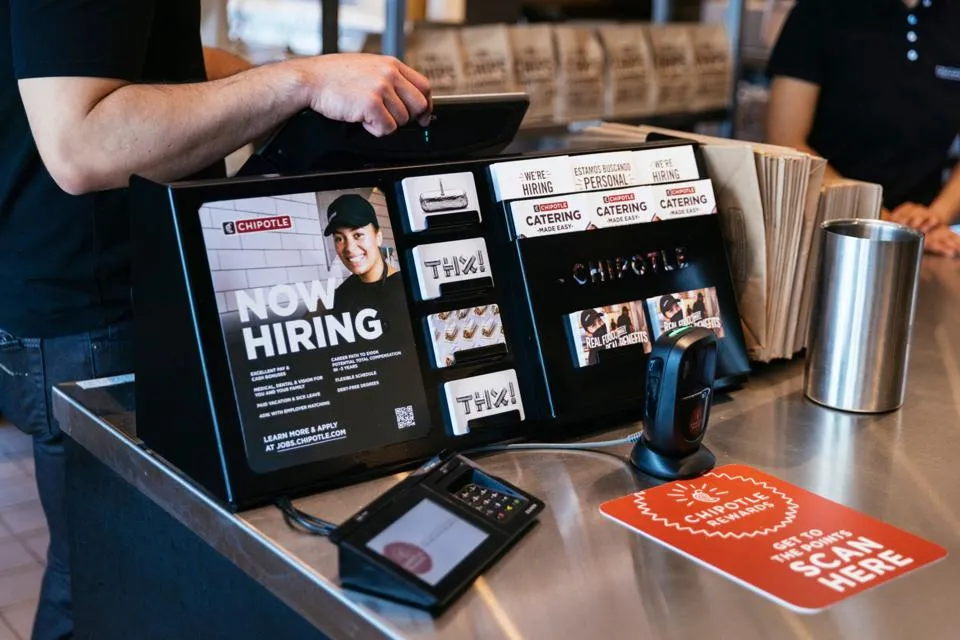Despite layoffs, employers struggle to hire as Covid's legacy continues
Since the Covid pandemic began three years ago, some of the biggest U.S. companies are cutting jobs, but others are still scrambling to hire workers.
Several tech giants have announced job cuts over the past few weeks, including Meta, Amazon, and Microsoft, as well as companies ranging from Disney to Zoom. According to a report released earlier this month from outplacement firm Challenger, Gray & Christmas, nearly 103,000 U.S.-based employers lost their jobs in January, the most since September 2020, according to employers in the U.S.
Analysts had expected employers to add 517,000 jobs last month, but they ended up adding nearly three times that number. The labor market remains tight, particularly in service sectors that were hit hard by the pandemic earlier.
Because of this dynamic, it is becoming even more difficult to predict the direction in which the U.S. economy is headed. There has been a significant increase in consumer spending in recent months, which surprised some economists, in spite of higher interest rates and persistent inflationary pressures.
J.P. Morgan Asset Management global chief strategist David Kelly said it's all part of the Covid pandemic's "legacy of weirdness."
Nonfarm payrolls will be released on March 3 by the Bureau of Labor Statistics.
Analysts and economists warn that weakness in some sectors, household budget strains, savings losses, and high-interest rates could further fuel job losses in other sectors, especially if wages fail to keep up with inflation.
According to the Bureau of Labor Statistics, wages in the leisure and hospitality industry rose to $20.78 per hour in January from $19.42 a year earlier.
“There is a difference between saying the labor market is tight and saying it is strong,” Kelly said.
It has been difficult for employers to attract and retain staff in recent years, due to childcare needs and competitive workplaces that offer better schedules and salaries.
A rising interest rate environment and rising inflation could cause consumers to cut back on their spending, which could result in job losses or a decline in hiring requirements in otherwise booming industries.
“You lose more than just a job when you lose your job,” says Jefferies chief economist Aneta Markowska.
In other words, if some tech companies have trouble, that could translate into a drop in business travel. If job losses rise significantly, that could also lead to households cutting back on spending.
The big reset
Companies that beefed up staffing during the pandemic when remote work and e-commerce were more prevalent have been laid off recently.
Amazon announced earlier this month that it would be cutting 18,000 jobs. According to company filings, the Seattle-based company employed 1.54 million people at the end of last year, nearly double the number at the end of 2019, just before the pandemic.
Microsoft is cutting 10,000 jobs or about 5% of its workforce. Prior to the pandemic, the company had 144,000 employees; by June last year, it had 221,000.
Michael Gapen, head of U.S. economic research at Bank of America Global Research, said the tech sector had been growing at all costs.
There are still companies adding employees. This year, Boeing plans to hire 10,000 people, many of them in manufacturing and engineering. Layoffs and attrition will also result in the loss of about 2,000 corporate jobs, mostly in the human resources and finance departments. This growth will enable the aerospace giant to ramp up the production of new aircraft for a rebound in orders from airlines like United and Air India.
Travel dried up early in the pandemic and airlines and aerospace companies are now catching up. As a result of pilot shortages, airlines are limited in their capacity, while demand for experiences such as travel and dining has increased.
In preparation for a busy spring and to support its expansion, Chipotle plans to hire 15,000 workers.
Holding on
In order to attract and retain workers, both small and large businesses are experiencing a rise in wages. Many businesses are rebuilding their workforces after shedding workers as a result of falling out of favor with consumers and other businesses, such as restaurants and aerospace. In order to attract and retain workers, Walmart announced that it would raise the minimum wage for its employees at its stores to $14 per hour.
Cassidy Smith, general manager of the Miner's Hotel in Butte, Montana, raised hourly pay for housekeepers by $1.50 to $12.50 in the last six weeks due to a high turnover rate.
There has also been a race between airports and concessionaires to hire workers as the travel industry rebounded. In an effort to help with hiring, Phoenix Sky Harbor International Airport holds monthly job fairs and offers some staff child-care scholarships in order to assist in the hiring process.
Austin-Bergstrom International Airport, where schedules by seat grew by 48% from the same period last year, has launched a number of initiatives, including $1,000 referral bonuses and signing and retention incentives.
Airport facilities representatives will also earn $20.68 per hour in 2023, up from $16.47 in 2022.
“Austin has a high cost of living,” Kevin Russell, the airport's deputy talent chief, said.
Retention of employees has improved, according to him.
In particular, electricians, plumbers, and heating and air conditioning technicians have been hard to retain because they can work elsewhere for higher wages and without 24/7 availability.
Even though it has become easier to attract new employees, many companies' new workers need to be trained, a time-consuming process.
Boeing CEO Dave Calhoun said on an earnings call in January that hiring is no longer a constraint. "People can hire the people they need. In the end, it's all about training and preparing them for the sophisticated work we require."

Subscribe to our newsletter!
As a leading independent research provider, TradeAlgo keeps you connected from anywhere.








